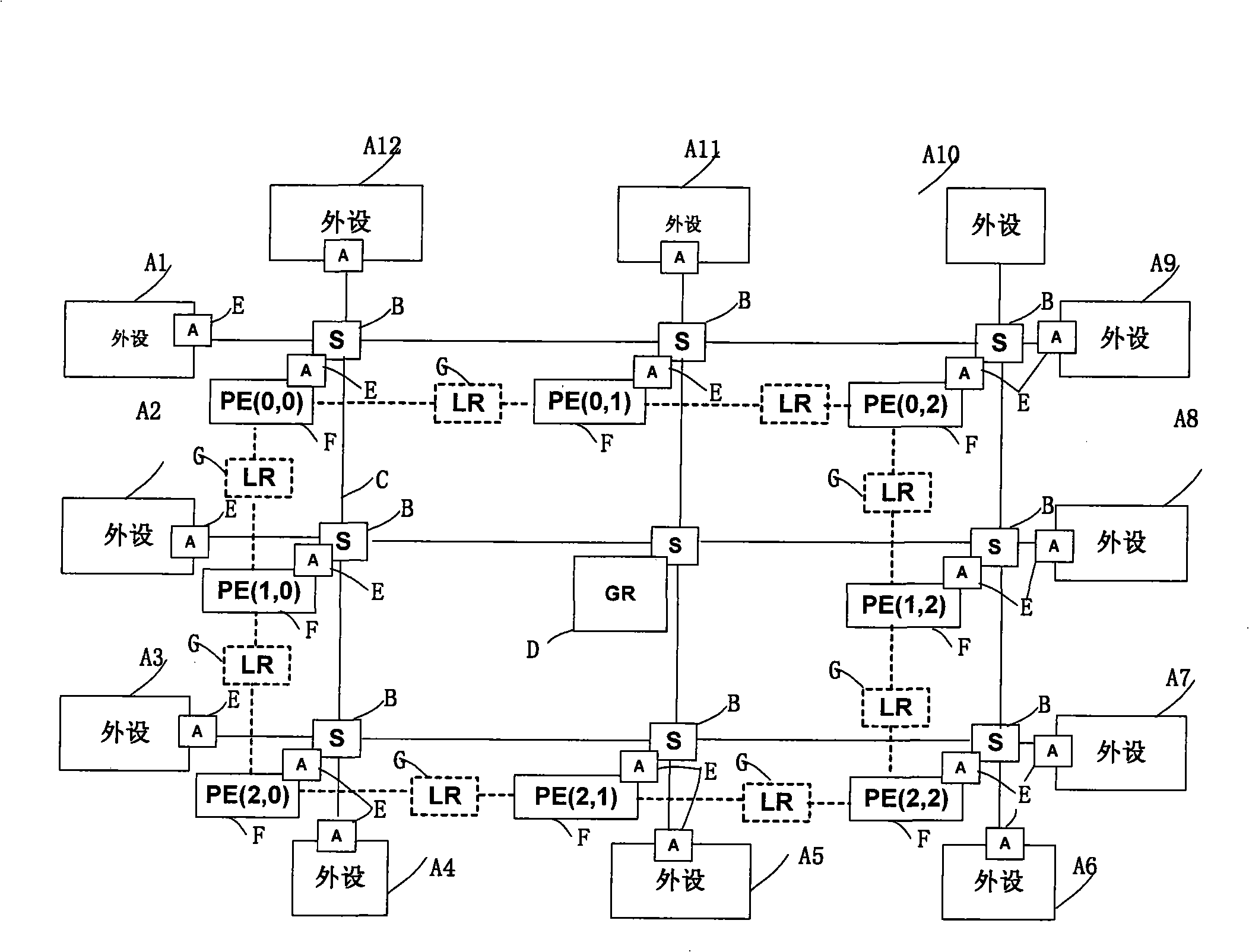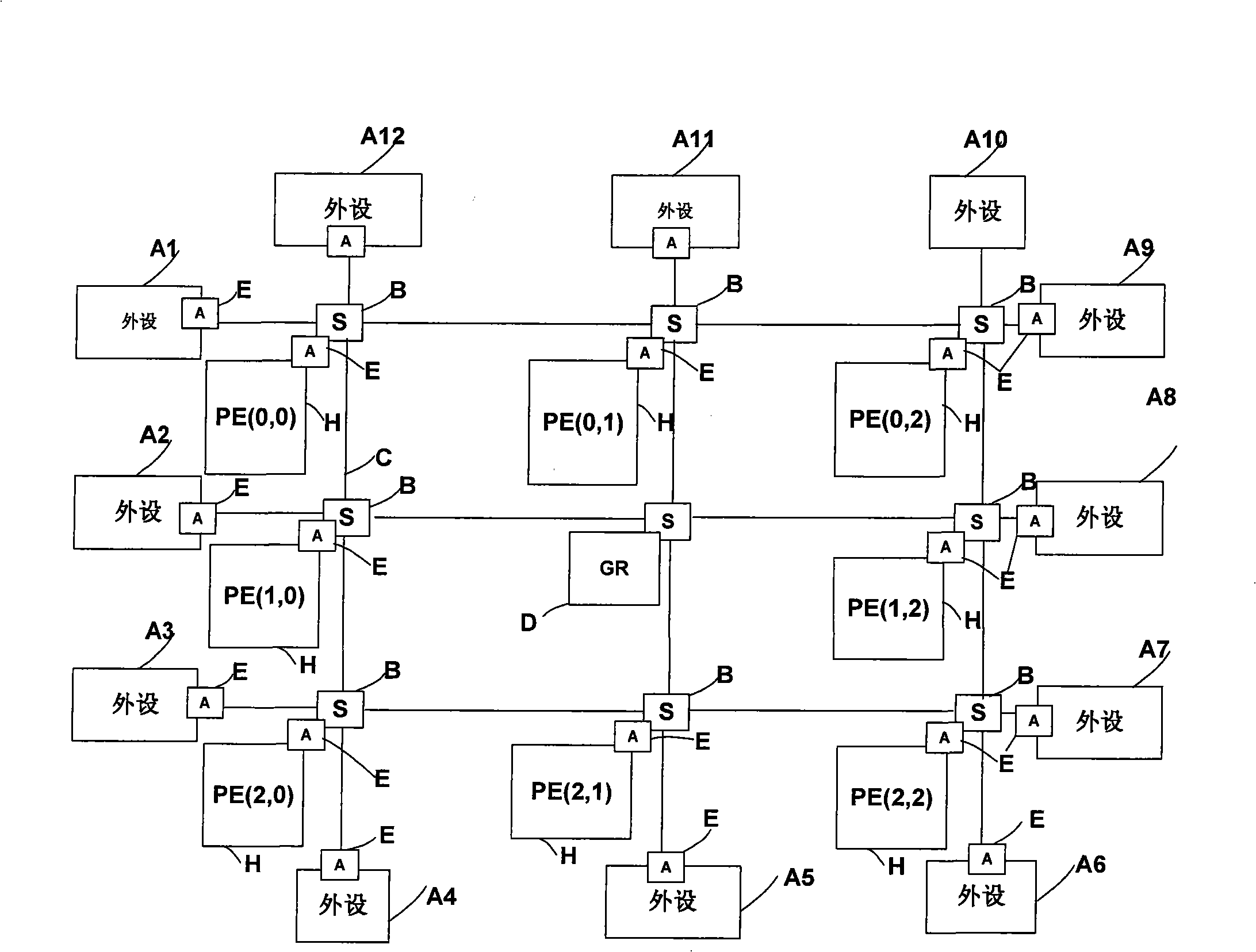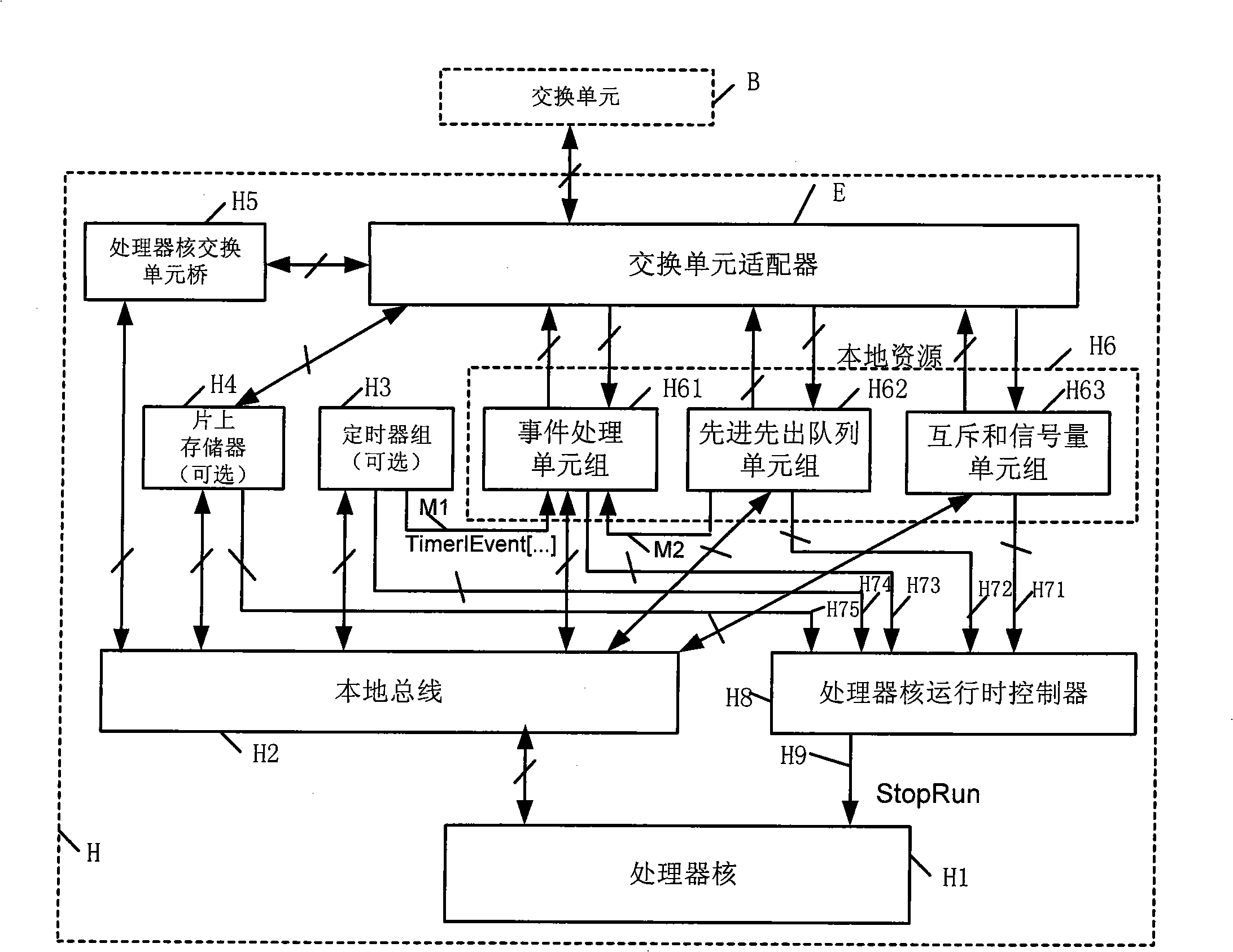First-in first-out queue unit set of multi-core processor satisfying SystemC grammar
A first-in-first-out queue and unit group technology, which is applied to the architecture with multiple processing units, electrical digital data processing, special data processing applications, etc., can solve problems such as not supporting parallel languages and difficulty in debugging multi-core processors
- Summary
- Abstract
- Description
- Claims
- Application Information
AI Technical Summary
Problems solved by technology
Method used
Image
Examples
Embodiment Construction
[0052] A multi-core processor meeting the syntax requirements of SystemC provided by the present invention will be described in detail below in conjunction with the accompanying drawings and specific embodiments.
[0053] Multi-core processors optimized for SystemC hope to adopt SystemC as a multi-core software development language. SystemC is an extended library of C++. In 1999, companies such as Cadence, Synopsys, and ARM in the EDA industry jointly organized the development of a C++-based EDA language, thus giving birth to SystemC. In 2006, SystemC officially became the IEEE standard, becoming the third natural language after VHDL and Verilog supported by all EDA software.
[0054] SystemC can provide higher design efficiency and a more effective design process, which can help solve the explosive complexity, market pressure, cost rise and other problems faced by the integrated circuit industry.
[0055] The SystemC language itself is an extension of C++. Therefore, althoug...
PUM
 Login to View More
Login to View More Abstract
Description
Claims
Application Information
 Login to View More
Login to View More - R&D
- Intellectual Property
- Life Sciences
- Materials
- Tech Scout
- Unparalleled Data Quality
- Higher Quality Content
- 60% Fewer Hallucinations
Browse by: Latest US Patents, China's latest patents, Technical Efficacy Thesaurus, Application Domain, Technology Topic, Popular Technical Reports.
© 2025 PatSnap. All rights reserved.Legal|Privacy policy|Modern Slavery Act Transparency Statement|Sitemap|About US| Contact US: help@patsnap.com



